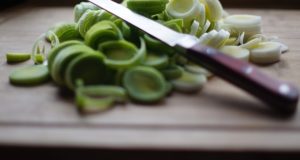A scrub plane is a woodworking hand tool that can be used to flatten and level boards that are too wide for a joiner. Most joiners are between 6†and 8†wide, so a scrub plane is useful for leveling wider pieces of wood. One side of the wood needs to be flat to put it into a planer, so manually flattening one side is often necessary if the wood is too wide.
A scrub plane is not wide enough to flatten a wide piece of wood, but it is very handy for working on the width of the wood stock so that you can fit it into the joiner. For example, if your wood stock is 1†too wide for the planer and you need to remove the extra inch, a scrub plane is much faster, easier and smoother than working with a hand saw. A jack plane is more effective for flattening a wider piece because it has a little more surface area. If you are doing your roughing with a power plane, the scrub plane is great for leveling out the surface before sending it through the planer.
Traditionally the scrub plane is used in criss-crossing angles diagonally across the grain. This way you work on the width and length at the same time. If you get a lot of tear on the diagonal, you can go over again at ninety degree angles. When it is cut all the way through, it is as flat as you can get it. You can switch to a tooth blade or jack plane to go flatter if necessary.
When you use a scrub plane, it is best to use a piece of wood that is wider than you need it to be when finished, because chunks of wood from the edge will likely be thrown out.
A scrub plane is useful for creating a tight fit on door frames and window frames. Walls are generally not perfectly flat, so shaving off thin layers of the moulding with it is a great way to make a perfect fit. You can hold the trim board up to the wall and mark areas that are high with a pencil. Use the tool to match the warp and imperfection of the wall.
Most people nowadays use the scrub plane to take down the width of a piece of wood. Simply clamp the wood to your workbench and run the tool all the way down the length of the wood until you have taken off enough layers to achieve the width that you are working towards. This will not leave a perfectly level edge, but it should be fairly smooth. Some people purposely leave the slightly wavy edge as an attractive decorative touch.



